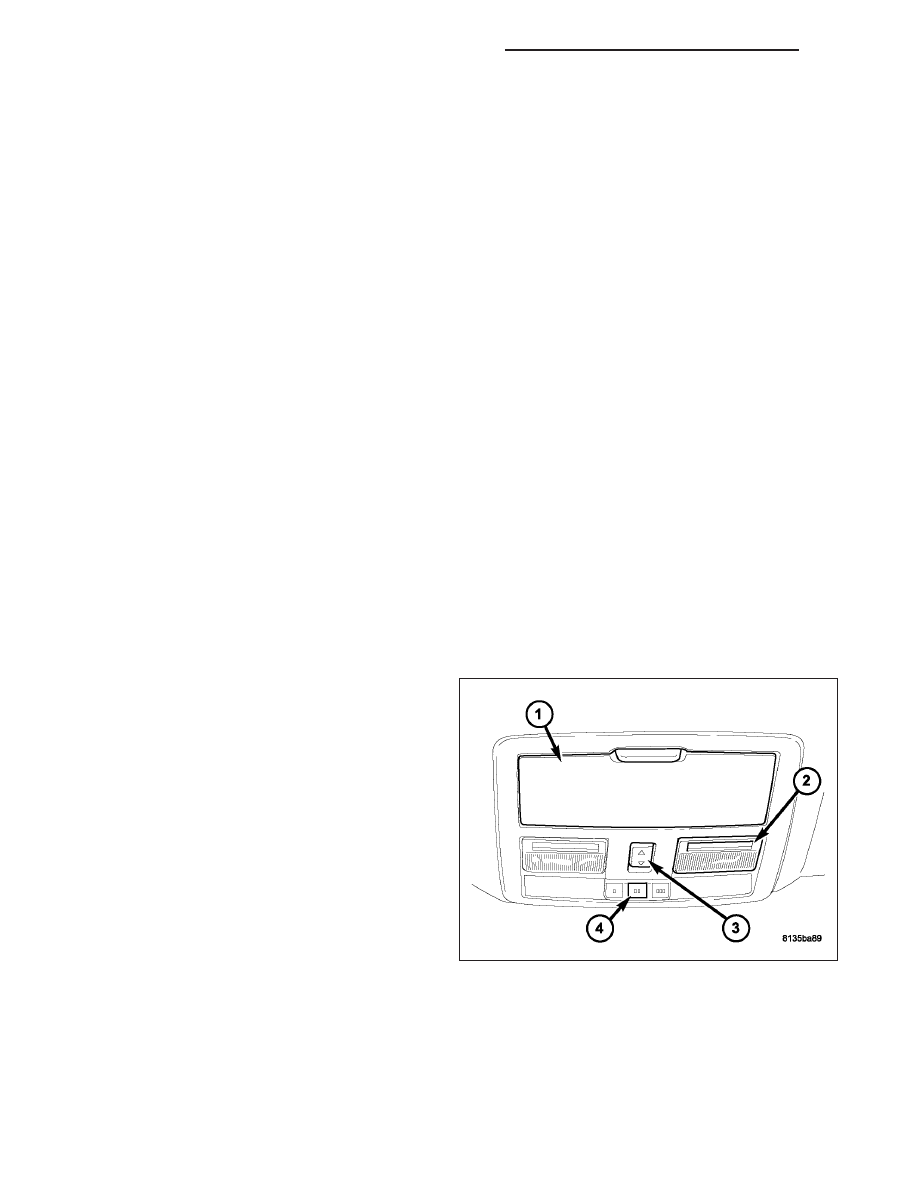Jeep Grand Cherokee WK. Manual - part 459

8. Return to the vehicle and firmly press, hold for two seconds and release the programmed HomeLink button.
Repeat the
(
press/hold/release
(
sequence a second time, and, depending on the brand of the garage door
opener (or other rolling code equipped device), repeat this sequence a third time to complete the programming.
9. HomeLink should now activate your rolling code equipped device.
10. To program the remaining two HomeLink buttons, begin with
9
Programming
9
step two. Do not repeat step
one.
ERASING TRANSMITTER CODES
NOTE: Individual channels cannot be erased. Erasing the transmitter codes will erase ALL programmed
codes.
To erase programming from the three buttons (individual buttons cannot be erased but can be
9
reprogrammed
9
-
note below), follow the step noted:
•
Press and hold the two outer HomeLink buttons and release only when the Electronic Vehicle Information Cen-
ter (EVIC) display shows “Channels Cleared” (after 20 seconds). Release both buttons. Do not hold for longer
that 30 seconds. HomeLink is now in the train (or learning) mode and can be programmed at any time, (Refer
to 8 - ELECTRICAL/OVERHEAD CONSOLE/UNIVERSAL TRANSMITTER - STANDARD PROCEDURE).
REPROGAMMING TRANSMITTER CODES
CAUTION: Vehicle exhaust contains carbon monoxide, a dangerous gas. Do not run the vehicle’s exhaust
while training the transceiver. Exhaust gas can cause serious injury or death.
CAUTION: Your motorized door or gate will open and close while you are training the Universal Transceiver.
Do not train the transceiver if people or pets are in the path of the door or gate. A moving door or gate can
cause serious injury or death to people and pets or damage to objects.
To program a device to HomeLink using a HomeLink button previously trained, follow these steps:
1. Press and hold the desired HomeLink button (4).
Do NOT release the button.
2. The EVIC display will show “Channel X Trans-
mit” (where X is Channel 1, 2, or 3) for 20 seconds
and then change to “Channel X Training”. Without
releasing the HomeLink button, proceed to step 3.
3. Position the end of your hand-held transmitter
1-3 inches (3-8 cm) away from the HomeLink but-
tons.
4. Simultaneously
press
and
hold
both
the
HomeLink button that you want to train and the
hand-held transmitter buttons. Do not release the
buttons until step 5 has been completed.
5. Press and hold the just trained HomeLink button
and observe the EVIC display. If the EVIC display
shows “Channel X Transmit” (where X is Channel 1,
2, or 3), programming is complete and your device should activate when the HomeLink button is pressed and
released.
NOTE: To program the remaining two HomeLink buttons, begin with
(
Programming
(
step two. Do not repeat
step one.
8M - 26
OVERHEAD CONSOLE - SERVICE INFORMATION
WK